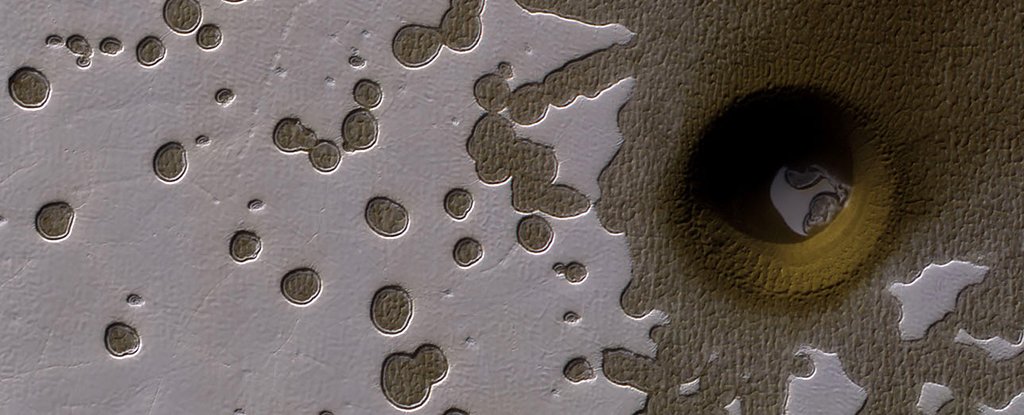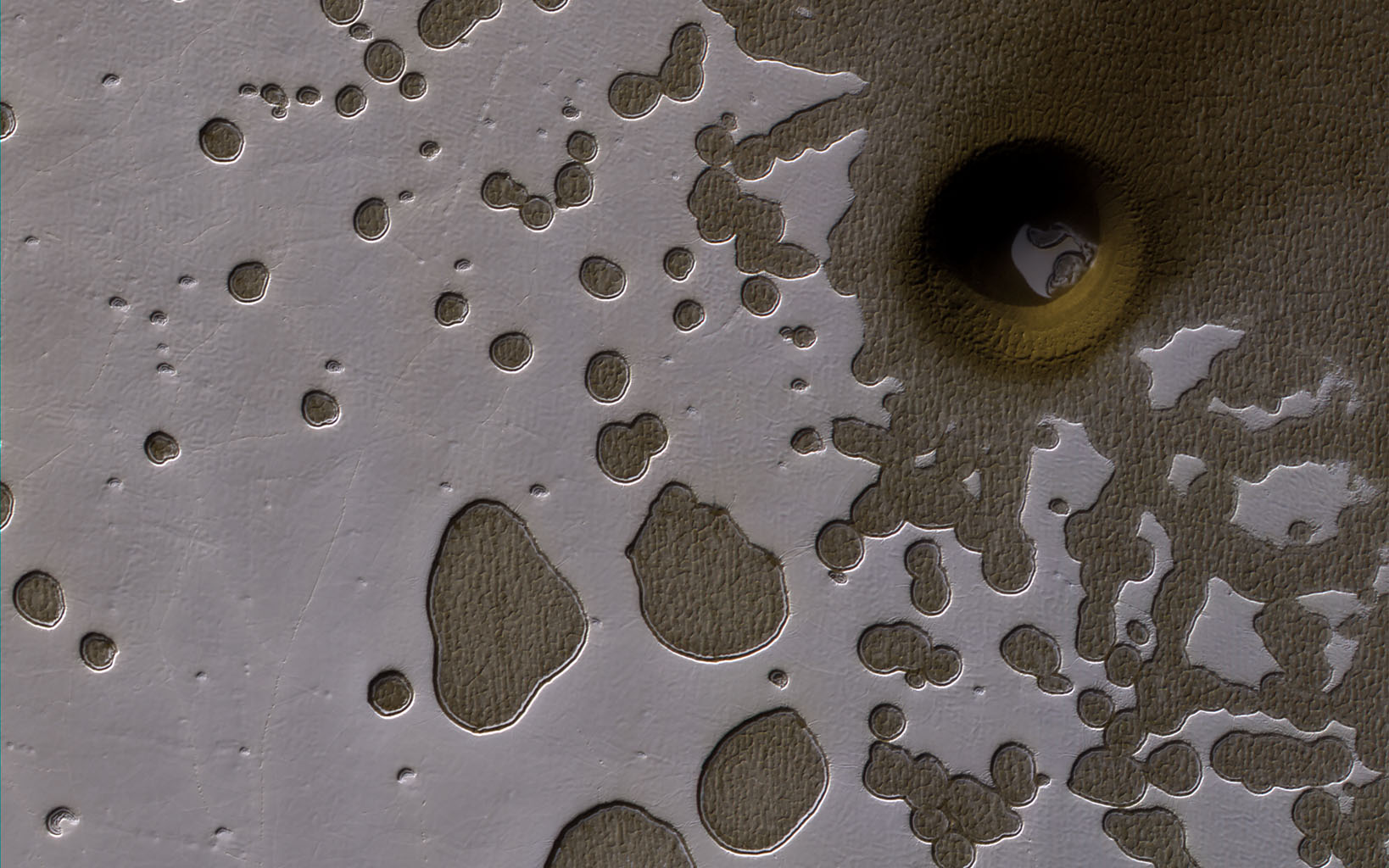As we
celebrate 2000 days of Curiosity's exploration, we should remember it's just
one of an army of robotic eyes throughout space exploration history. You'd
think NASA's Mars Reconnaissance
Orbiter (MRO) has seen everything there is to see on the Martian
surface in the 12 years it's orbited our nearest neighbor.

But a
snapshot taken over the planet's South Pole revealed something NASA scientists
couldn't explain. While the planet's entire surface is pocked with various
depressions and craters, a vast pit spotted among the "Swiss cheese
terrain" of melting frozen carbon dioxide appeared to be a bit deeper than
your average hole, leaving astronomers to try and figure out what made it.
A lot of
things can make holes in Mars' rocky terrain: more than half a million
meteorite impacts have left craters; collapsing
lava tubes have created deep pits; ancient
floods have gouged out giant chasms; and volcanic
activity has melted ice to leave funnels. Occasionally the MRO will come
across an odd feature that poses a fun mystery to solve, such as this
shallow, circular depression seen earlier last year. But there's
nothing so shallow about this pit. Just take a look at it:

Being
summer for Mars' South Pole, the Sun was low enough in the sky to accentuate
shadows over the landscape, making subtle features pop right out. Yet a few
rays of light were still able to reveal ice at the bottom of the hole. Surrounding
the pit patches frozen carbon dioxide could be seen. The circles in the ice
were thought to be where the dry ice had sublimated into gas in the summer
sunshine, leaving what astronomers have called "Swiss
Cheese terrain".
The image
was taken using the MRO's High Resolution
Imaging Science Experiment, or HiRISE camera, which allows researchers to
see objects on Mars that are larger than one metre (about 3 feet) in size from
about 200 to 400 kilometres (about 125 to 250 miles) above.
That
means the pit isn't tiny – at 50 centimetres (19.7 inches) per pixel, we're
looking at a feature hundreds of metres across. Take a look on NASA's website
for a hi-res
version of the image. So the question is, did something punch its way
through, or is it a collapse of some sort?
Without
more information, it's been hard to tell, but no doubt NASA are still whittling
down the possibilities. The MRO has been in Martian orbit since March, 2006,
sending back detailed images of the Red Planet's surface that reveal a dynamic
environment where
dust devils roam, sand
dunes crawl, and occasional bits
of Earthling tech are left to gather dust. After completing all of its
primary goals in the first two years, and two mission extensions, the orbiter
is still going strong – we'll almost certainly be seeing more odd holes like
this in the future.
Comments
Post a Comment